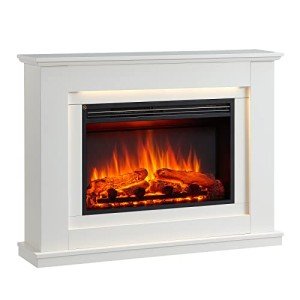20 Up-And-Comers To Watch In The Wood Burning Fireplaces UK Industry
Wood Burning Fireplaces in the UK: A Comprehensive Guide
Wood burning fireplaces have long been a staple of warmth and charm in homes across the UK. The crackling sound of burning wood and the flickering of flames create an inviting atmosphere, changing a home into a warm sanctuary. With the growing trend of environmentally friendly heating services, wood burning fireplaces are ending up being significantly popular again. This post offers an extensive take a look at wood burning fireplaces in the UK, their benefits, regulations, maintenance, and other essential details for potential purchasers and users.
Understanding Wood Burning Fireplaces
Wood burning fireplaces can be specified as enclosed spaces created for burning wood, providing both heat and aesthetics to living areas. They can be found in different styles, accommodating modern aesthetic appeals and traditional styles.
Types of Wood Burning Fireplaces
Open Hearth Fireplaces: Traditional in design, open hearth fireplaces supply a genuine experience. Nevertheless, they are less efficient and can lead to heat loss.
Wood Burning Stoves: These are closed systems that burn wood efficiently. They can be freestanding or placed into existing fireplaces.
Fireplace Inserts: Designed to be fitted into open hearths, these inserts improve combustion effectiveness while retaining the traditional look.
Pellet Stoves: These are modern wood burning devices that use compressed wood or biomass pellets, providing a cleaner burn and greater performance.
Outdoor Fireplaces: These are constructed for external use, often boosting outdoor living areas and providing heat throughout events.
Benefits of Wood Burning Fireplaces
Eco-Friendly: When sourced sustainably, wood burning can be a carbon-neutral heating service.
Cost-efficient: With rising energy costs, using wood can be a more affordable choice, specifically if you have access to totally free or inexpensive lumber.
Visual Appeal: The ambiance developed by a roaring fire is unrivaled, including character and appeal to any area.
Adaptability: Wood burning fireplaces come in numerous design and styles, making them appropriate for almost any interior design.
Self-Sufficient Heating: In remote locations or during power blackouts, wood burning fireplaces provide a trustworthy source of heat.
Regulations Surrounding Wood Burning Fireplaces in the UK
To keep air quality and ensure security, the UK government and regional authorities have actually established regulations concerning using wood burning fireplaces.
Smoke Control Areas: Many metropolitan areas are designated as smoke control locations where only 'Exempt Appliances' can be utilized to burn wood.
EPA and Defra Certification: Wood ranges and fireplaces ought to abide by guidelines from the Environmental Protection Agency (EPA) and the Department for Environment, Food & & Rural Affairs (Defra).
Biomass Requirements: Only sustainably sourced wood logs must be burned, adhering to guidelines to decrease carbon emissions.
Air Quality Regulations: Regular checks might be required to ensure that your fireplace does not produce excessive smoke emissions.
Element
Details
Kind of Fireplace
Open Hearth, Wood-Stove, Insert, Pellet Stove, Outdoor
Eco Friendliness
Sustainable sourcing makes it carbon-neutral
Laws
Must comply with regional smoke control and emissions laws
Efficiency
Differs by type; wood stoves usually offer greater efficiency
Visual Options
Wide variety of designs, from traditional to modern styles
Maintenance of Wood Burning Fireplaces
Appropriate upkeep is vital to make sure the safety and longevity of wood burning fireplaces. Following these guidelines can help homeowners enjoy their fireplaces year after year.
Regular Maintenance Tips
Annual Inspections: Hire a professional chimney sweep to check and clean the chimney a minimum of when a year.
Look For Creosote Buildup: Creosote, a byproduct of wood burning, can accumulate in the chimney and present fire risks.
Fireplace Cleaning: Regularly clean out ash and particles from the firebox to optimize performance.
Inspect for Cracks and Damage: Inspect the fireplace and flue for fractures or damage that could affect performance or security.
Use Seasoned Wood: Only burn dry, skilled wood to minimize creosote buildup and improve performance.
Safety Precautions
Install Carbon Monoxide Detectors: Ensure that your home is geared up with CO detectors to keep track of gas levels.
Keep Flammable Items Away: Maintain a safe distance in between the fireplace and flammable items.
Never Leave Unattended Flames: Always monitor the fireplace while it's in use.
Use a Fire Guard: Install a screen or guard to prevent embers from getting away the fireplace.
Educate Everyone: Ensure that all family members comprehend the safe operation of the fireplace.
Frequently Asked Questions About Wood Burning Fireplaces in the UK
Q: Is it legal to utilize a wood burning fireplace in urban locations?
A: Yes, but you need to abide by regional regulations, especially if you reside in a smoke control area.
Q: How can I inform if my appliance is exempt?
A: Look for the 'Exempt Appliance' label certified by Defra, indicating that the device meets emission limitations.
Q: What kind of wood is best for burning?
A: Seasoned woods like oak, ash, and birch burn most efficiently. Softwoods like pine can produce more creosote.
Q: How often should I clean my chimney?
A: It's recommended to clean and examine your chimney a minimum of once a year, more frequently if you use it regularly.
Q: Are there advantages to using a wood burning range over a fireplace?
A: Yes, wood burning stoves are normally more effective, produce less smoke, and use better heat retention compared to open hearth fireplaces.
Wood burning fireplaces stay a cherished feature of many homes throughout the UK, mixing functionality with aesthetic appeal. By understanding the various types, advantages, guidelines, and upkeep requirements, house owners can take pleasure in the heat and atmosphere of a wood burning fireplace while sitting easily within regulatory limits. With a growing concentrate on sustainability, wood burning might continue to act as a practical heating service for many years to come. Whether Buy Fireplaces 're an experienced user or checking out the option for the first time, ensuring accountable usage and maintenance will make the most of both security and satisfaction.
